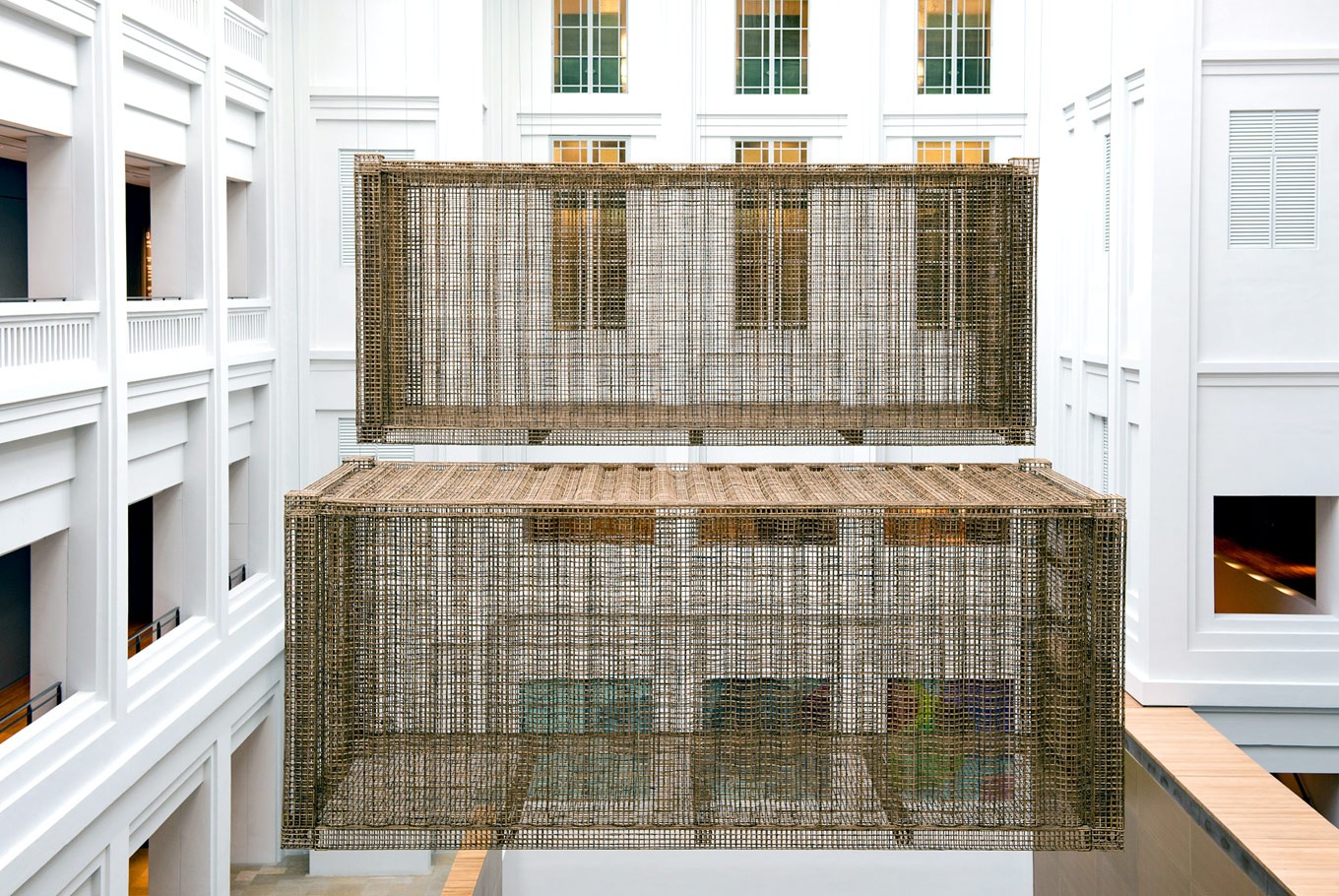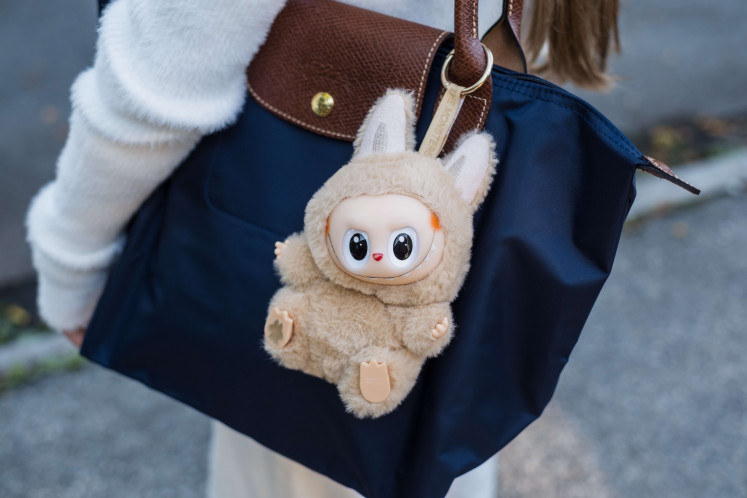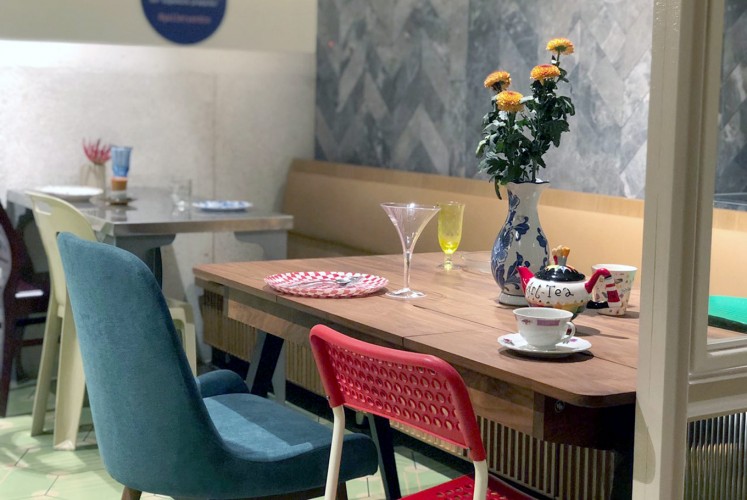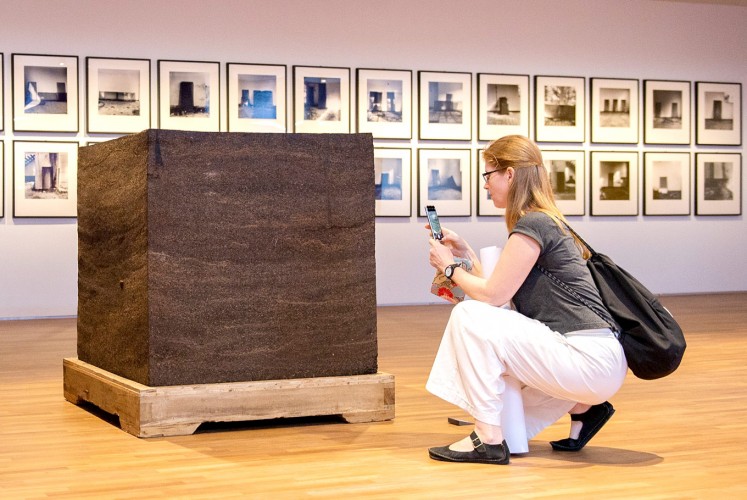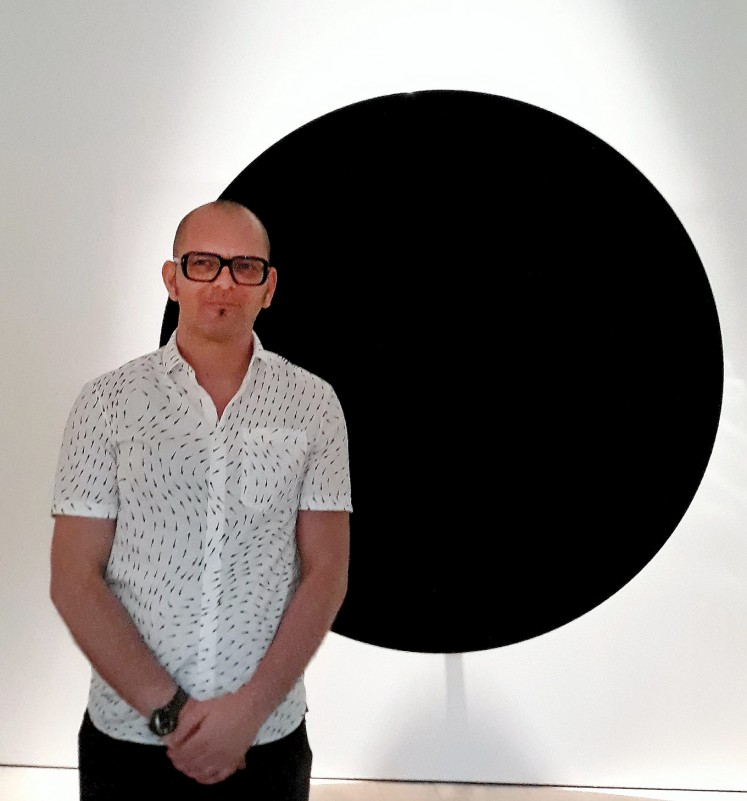Popular Reads
Top Results
Can't find what you're looking for?
View all search resultsPopular Reads
Top Results
Can't find what you're looking for?
View all search resultsSingapore hosts first minimalist art exhibit in Southeast Asia
A newly opened exhibition examines the Minimalist art movement and its Asia-West interaction. It is the first exhibition of its kind in Southeast Asia.
Change text size
Gift Premium Articles
to Anyone
“Minimalism: Space. Light. Object.” marks the first exhibition of Minimalist art in Southeast Asia.
The five-month exhibition, which runs until April 14 next year, brings some 150 works by more than 80 artists and 40 composers to two venues: the National Gallery Singapore and the ArtScience Museum at Marina Bay Sands.
“While Minimalism has had a significant impact on contemporary design and lifestyle in Asia, its relationship to art in the region has been less well understood,” said National Gallery Singapore director Eugene Tan.
The exhibition, he said, aimed to examine the relationship of Minimalism to art in Asia, as well as the influence that Asian spirituality and philosophy had on the movement’s origins.
Minimalism, one of the most influential art movements of the 20th century, offers a powerful new way of experiencing art: rather than referencing the world outside, its simple forms invite viewers to contemplate what is physically before them in the present moment.
This fundamental shift was inspired by questioning the role of art amid the great social changes of 1960s America, which spurred a search for new forms of consciousness. The movement’s key influences were Asian spirituality and emerging ideas on perception.
Minimalism contributed to the transformation of how artists used materials and space and how they involved the viewer – considered fundamental to the development of contemporary art forms such as installations and performance art.
Tan curated the exhibition over two-and-half-years alongside the gallery’s Russell Storer, Silke Schmickl and Goh Sze Ying, as well as Adrian George and Honor Harger of the ArtScience Museum.
Visitors to the exhibit can trace the development of Minimalist art and ideas from the 1950s to the present at the National Gallery Singapore, before heading to the ArtScience Museum to explore key aspects of the movement’s artistic trends, including color and spirituality.
Work No. 1343 by Martin Creed (National Gallery Singapore/File)“Playing to our strengths as a museum of art and science, we have also chosen to present artworks which meditate on the notions of the cosmological void, emptiness and nothingness – principles which resonate with both Minimalism and science,” said Harger, the executive director of the ArtScience Museum.
Featuring many iconic pieces that have never before been shown in Southeast Asia, the exhibition focuses on how Minimalism moved from color-field painting to Minimalist objects in series and geometric shapes in the 1960s.
It also features a range of contemporary works from around the world that employ Minimalist forms and ideas to advance social engagement and commentary.
These include three new major commissions by Cambodia’s Sopheap Pich from, Singapore’s Jeremy Sharma and Belgium’s Frederik De Wilde.
Pich’s shipping container-shaped sculpture Cargo is a potent symbol of global trade and capital: these hardy “vessels” streamline the distribution of consumer goods all over the world.
While a regular shipping container is opaque to obscure its contents, Pich’s container made of bamboo, rattan and metal holds only air and offers a through view, illustrating a relationship between what is inside and what is outside.
Pich said he had been toying with the idea of Cargo around four years, inspired by the significant role shipping containers played in modernizing society as they transported ideas along with objects.
“The application of Minimalist ideas in my practice is also a reflection of my background and aspiration for my works. Despite travelling from country to country since young, I long for my art to be a singular piece of work with multiple cultural influences, yet simplified in its presentation – just like Minimalism,” he said.
Storer, deputy director of curatorial and research at the National Gallery Singapore, said the Minimalism movement was still very relevant today.
“It’s a movement that has been profound in the history of art. It changed many things, but it has not been seen very much,” said Storer.
“People know Minimalism through other ways like in design, lifestyle or aspects of the contemporary arts. There has never been a show [on Minimalism] in Southeast Asia,” he said.
British artist and Turner Prize winner Martin Creed has contributed Work No. 1343 to the exhibit in its first presentation in Asia. The installation is on display in the gallery’s Gallery & Co cafeteria.
Creed has blurred the distinction between art and everyday life by transforming the cafeteria into a whimsical yet functional work of art, in which every unique piece of furniture, crockery and cutlery is crowd-sourced from the community.
Work No. 1343 also redefines the relationship between the viewer and art, with the cafeteria’s customers becoming part of the installation.
“What we like about [Creed’s] work is his sense of humor. There’s real wit in his work. Something very simple, like lights going on and off,” said Storer, referring to the artist’s Work No. 312 A lamp going on and off, which is also on display at the gallery.
“He connects art to life. Placing that idea into the gallery is something else as well. Quite profound. Very powerful. [...] Controversial, [maybe] because it’s very simple. It does resonate with the idea of life and death, failure and success,” said Storer. “I think simplicity can be very powerful.”
Space. Light. Object.
With over 150 works by around 80 artists and 40 composers across two venues – the National Gallery Singapore and the ArtScience Museum – visiting the “Minimalism: Space. Light. Object.” exhibition might require some planning. Here is a look at some of the exhibit’s highlights to help you choose.
Ai Weiwei
Ai Weiwei’s Ton of tea (National Gallery Singapore/File)Chinese artist Ai Weiwei delivers strong messages through his pieces in the exhibition.
In Sunflower Seeds (2010, porcelain), Ai challenges the “Made in China” narrative of cheap, mass production by drawing attention to each worker and their wider connection to society.
Each sunflower seed is unique and handcrafted by ceramic artisans in Jingdezhen, a Chinese city historically known for its porcelain industry. The sheer number of seeds can also refer to the vast Chinese population.
The sunflower also has powerful associations for the artist, as it was adopted as a propaganda image during the Cultural Revolution.
In Ton of Tea (2006, Pu’er tea), the artist recalls the Minimalist sculptures of Robert Morris and Richard Serra he encountered when living in 1980s New York.
The 1-ton cube of dried Pu’er leaves also refers the traditional Chinese method of transporting tea by compressing the dried leaves into large blocks. The massive weight and size of the artwork evokes the enormous scale of the Chinese tea industry, both historically and today.
Sound Room
The Sound Room is a key section of the exhibition that explores how Minimalism manifested in music and sound art.
The Sound Room presents over 40 compositions of Minimalist music, which emerged alongside the visual art that came to define Minimalism in 1960s America.
Minimalist music traces its roots to the radical experiments of John Cage, who showed that even silence was a musical element. The sonic art form also hails from the deconstructed works of early modernist music and Asian traditions such as Indian classical music and Balinese sounds.
“Sound and silence also form a major part of the exhibition, with 40 musicians and composers presented in our Sound Room, which acts as an auditory counterpoint to the visual explorations of Minimalism presented within the galleries,” said Honor Harger, executive director of ArtScience Museum.
The room offers a unique listening experience through immersing in a musical form that shapes perceptions of time and space in a calm environ dedicated to a contemplative sensory experience.
The journey begins with During Minimalism, an exploration of 1960s Minimalist music, followed by an aural “look” at the genre’s precursors in Before Minimalism, which shows how early works took the concept of paring back to an extreme to remove even the basic element of music: sound.
The third program, After Minimalism, examines how a new generation of musicians uses technology to redefine Minimalism for the digital age, creating works of extreme sparseness and hypnotic depth.
All Black
Horizontal Depth³ – This Is Not the Place We Go to Die. It’s Where We Are Born by Frederik De Wilde (JP/Stevie Emilia)Belgian artist Frederik De Wilde worked closely with NASA scientists in his commissioned piece, Horizontal Depth³ – This Is Not the Place We Go to Die. Its Where We Are Born (2018, stainless steel, carbon nanotubes, polymer, LEDs), using nanotechnology to engineer a material believed to be the blackest black in the world.
Inspired by Kazimir Malevich’s iconic 1913 painting, Black Square, considered by many to be the most important precursor to Minimalism, De Wilde’s carbon nanotube sculptures capture all frequencies of visible light.
Viewers literally look into nothing in the void space the artwork creates, the closest approximation of emptiness that is possible to experience.
De Wilde sees this “void” as a space for imagination and unification: in absolute darkness, all people are the same.
“Minimalism, for me, hides a deep realism grounded in the oscillation and convergence of art and science, and by extension, technology. For example, when zooming in on the infinitely small or infinitesimal, we’re often confronted with an enigmatic, abstract poetic beauty which can’t be seen, explained or rendered into words. It can only be felt, experienced, conceptualized or measured,” the artist says.
“Hence Minimalism is, for me, interesting from the backend. Minimalism has a potential provocative and subversive power to usher us in the 21st century in a way that goes far beyond plain formalism, esthetics and design, but instead could tackle contemporary subjects as privacy, fake news, global warming and other environmental or societal issues and challenges.”

